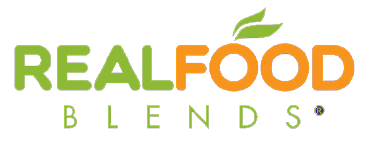
The Value of Daily Values?
What’s really behind all those nutrition numbers
by Sarah Kiser, MS, RD, CSO, CNSC
There are many terms to describe “nutrient needs.” DRIs, RDIs, RDAs, DRVs, ABC123s (just kidding on that last one), but what do they all mean? What do they mean for people with feeding tubes?
In the feeding tube world, the phrase “nutritionally complete” gets used a lot, but it’s important to know that formulas are made nutritionally complete with the use of supplements. (Read “The Facts About ‘Nutritionally Complete” here.) First, we need to get into some definitions. There are two general classes of analyzing nutrient needs: Daily Values (DVs) and Dietary Reference Intakes (DRIs). They overlap and are sometimes used interchangeably, but it is helpful to know where the differences lie.
Daily Values (DVs)
DVs are reference amounts of nutrients to consume. These are the percentages you see listed on the Nutrition Facts panel on food labels. DVs are based on two things:
- Reference Daily Intakes (RDIs): a set of references for vitamins and minerals on food labels based on recommended dietary allowances (RDAs)
- Daily Reference Values (DRVs): these are established for fat, saturated fat, cholesterol, carbohydrates, protein, dietary fiber, sodium, and potassium
RDIs typically represent the recommended nutrients of the group with the highest need. For example, the RDI for vitamin D is 20 mcg, which is the RDA for adults over the age of 70. Meanwhile, the RDI for calcium is 1300 mg, which is the RDA for children 9-18 years of age. These age groups have the highest need for vitamin D and calcium, respectively. That means the DV does not represent the much wider population which typically doesn’t need as much vitamin D and calcium. These reference values listed on food labels simply provide context for consumers to know what they are eating and are intended to cover the widest group of people possible.

DVs are:
- Used on food labels
- Provide perspective on daily nutrient needs for adults and children ages 4 and up
- Based on a 2,000-calorie diet
DVs are not:
- Recommended intakes for individuals
- Age, gender, or life stage specific
- Always applicable to those who need less or greater than 2,000 calories daily
Dietary Reference Intakes (DRIs)
In contrast to RDIs, DRIs do vary by age, gender, and life stage. DRIs are used to determine nutrient needs for healthy people. The most important terms to know related to DRIs are:
- Recommended Dietary Allowance (RDA): The average daily level of intake that meets the nutrient requirements of 97-98% of healthy people;
- Adequate Intake (AI): established when there isn’t enough data to create an RDA. This is set at a level assumed to ensure nutritional adequacy for healthy people.
RDAs are broken out by age and gender with predetermined heights and weights. These reference weight-and-height values are not necessarily ideal; they simply make it possible to define recommended nutrient intakes appropriate for the largest number of people. RDAs meet or exceed the actual requirements of all but 2-3% of the population. Some people may not meet RDAs with their daily diets but may still meet their individual requirements.
While DRIs are more age, gender, and life stage specific than DVs, DVs are used on food labels and many enteral formula labels. Remember, DVs only provide information on daily nutrient needs for people 4 years old and older and are not recommended intakes for individuals.
One thing that DVs and DRIs share in common? They are both created for healthy people. People with feeding tubes fall across the spectrum of “health” and often have more unique needs to consider. A child with failure to thrive or an adult with severe muscle wasting probably do not fall into the reference weight-for-height values used to determine RDAs.
DRIs and DVs are certainly useful in serving as a benchmark for nutrient needs. But for people with feeding tubes especially, it is important to remember that the DVs shown on many formula labels aren’t necessarily accurate for your specific needs. When determining nutrient needs for an individual person, it is important to consider that their specific medical diagnoses, medications, weight and weight changes, and symptoms of nutrient deficiencies.
Food or Supplements?

The Dietary Guidelines for Americans state that your nutritional needs should be primarily met through a variety of nutrient-dense foods across all food groups. The American Institute for Cancer Research recommends that most people aim to meet nutritional needs through a healthy, varied diet alone, and cautions against using dietary supplements to decrease cancer risk.
Supplements are not intended to substitute for food and cannot duplicate all of the benefits from whole foods. Beyond vitamins and minerals, whole foods contain thousands of important nutrients, like carotenoids, flavonoids, and other antioxidants and phytochemicals that are not found in supplements. Many of these nutrients work together to enhance absorption and reduce risk for chronic disease, and supplements do not replicate the synergistic effects of nutrients in real food.
The evidence supporting the benefits of multivitamin and nutrient supplements is mixed. While it may seem that dietary supplements are all innocuous, it is important to remember that this is not the case. For example, high-dose beta-carotene supplements have been linked to an increased risk for lung cancer in current and former smokers.
Some populations may benefit from vitamin and/or mineral supplements added to a whole food, varied diet. It is always recommended that you consult with your registered dietitian or physician to evaluate your individual nutrient and supplement needs, whether you eat through a feeding tube or mouth!
The bottom line is: food first, supplements second – if necessary.
What Does This All Mean for Tube-Feeding?

The Real Food Blends Difference
Real Food Blends is the only line of tube-feeding formula that truly replicates a whole food, varied diet that is universally recommended for good health – without added synthetic vitamins or minerals. Real Food Blends meals feature:
- Only 5-7 real food ingredients.
- No added sugar, preservatives, or additives.
- Free from gluten, soy, nuts, and dairy.
Check out how our meals compare to the DRIs for different age ranges without adding in synthetic vitamins or minerals. When used as a primary source of nutrition, we recommend adding dairy (pourable Kefir is one of our favorites for the Calcium and probiotics) or a non-dairy substitute to round out calcium and vitamin D intake, as well as a source of sodium, like salt or broth. Remember, individual needs may differ from the DVs and DRIs, but in general, most dietitians agree that it’s better to eat an orange than take a Vitamin C supplement and hitting these goals every day shouldn’t be at the expense of the basics of good nutrition (i.e. avoiding added sugars, processed foods, eating a wide variety of whole foods, etc.)
Sarah Kiser, MS, RD, CSO, CNSC is a Business Development Manager for Real Food Blends and has more than 6 years of experience as an oncology dietitian and working with home healthcare companies.








